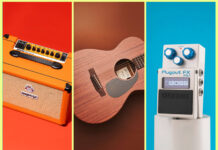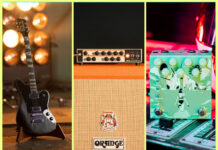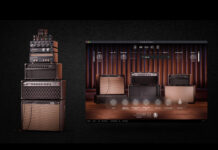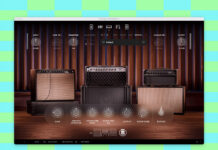
Guitar Recording FAQ: What’s the best type of microphone for recording acoustic guitar?
Hi Guitar.com, I want to make a simple mono recording of my acoustic guitar but don’t know which type of microphone to choose. Should I buy a condenser, a dynamic or a ribbon mic?
Steve, Aberdeen
Thanks Steve, that’s a great question and one that we can’t answer properly without breaking down the various types of recording microphones and their strengths and weaknesses. For recording purposes there are three main microphone types, so let’s look at those individually.
Moving coil microphones
Sennheiser MD 441 UThese are commonly referred to as dynamic mics, but since ribbon microphones are also dynamic microphones, we’ll avoid using the term. Both are ‘dynamic’ because sound waves cause an electrical conductor to move within a magnetic field, which induces a current within that conductor.
Read more: How to record acoustic guitars like a pro
In the case of a moving coil design, a coil of wire is wrapped around a cylindrical former that’s attached to a diaphragm. The diaphragm is suspended around its outer edge so the whole assembly moves in response to sound waves. Current is generated in the coil through electromagnetism and moving coil mics are basically speakers working in reverse.
PROS: Most moving coil microphones are inexpensive, they’re physically robust and do not require external power. They invariably have a cardioid pickup pattern, which means they are most sensitive at the front, less sensitive at the sides and reject sound arriving from the rear.
CONS: The frequency response usually begins to roll off between 6kHz and 10kHz. Some high-end moving coils do a little better, but most struggle to capture upper-harmonic sparkle. Many are optimised for close vocal use, so they tend to have preset bass roll-off.
BEST FOR: Moving coil mics aren’t the ideal choice for accurate, high-fidelity recordings but that doesn’t mean they’re bad acoustic guitar mics. The narrow frequency range and mid-focused tonal characteristics can result in surprisingly natural and characterful tones. Try adding some brightness using an equaliser and you may prefer the treble characteristics of a quality moving coil to some condenser microphones.
TRY THESE: Sennheiser MD 441, Beyerdynamic M 201, Electro-Voice RE20
Condenser microphones
Aston SpiritThese come in large and small capsule formats and have traditionally been the choice for acoustics. They need to be matched with a preamp that can supply 48v of phantom power and many have switchable bass roll-off plus attenuation pads to prevent overloading. A fixed cardioid pickup pattern is common, but some offer switchable omni-directional and figure-eight patterns.
Capsules are built with a solid metal backing plate arranged in parallel with a very thin (usually) plastic diaphragm. The diaphragm has a microscopic metal layer deposited on its surface and there’s an air gap between the plate and the diaphragm. With a DC polarisation voltage applied, this forms a capacitor – or ‘condenser’ if you prefer.
When sound waves cause the diaphragm to move, the gap changes, which varies the capacitance and causes the polarising voltage to alternate. The signal goes to an onboard preamplifier, which boosts the level and adjusts the impedance. These preamps can be valve or transistor based, and both types are widely available.
PROS: Condenser mics are very sensitive, have a full frequency range and a very fast transient response. They can capture harmonic overtones, the lowest bass notes and make it relatively easy to achieve natural and lifelike results.
CONS: They can be fragile and if broken, may be uneconomic to repair. Cheap examples may sound unnaturally bright and harsh in the treble frequencies and a suspension mount may be required to minimise rumble if your recording room is close to street traffic.
BEST FOR: If high fidelity is your priority, then a small-capsule condenser could be your best option. And for solo recordings in a room with pleasing natural ambience, an omnidirectional capsule might be preferred. Large capsule condensers may impart more of their own sonic characteristics and have a warmer and fuller midrange. This can have beneficial results and switchable pickup patterns can optimise the response for various acoustic environments and recording scenarios.
TRY THESE: Aston Spirit, Shure KSM141, Peluso P12
Ribbon microphones
Beyerdynamic M 160Ribbons were the first high-quality microphones to be used for recording music, with RCA introducing the Type 77 in 1932. They were used throughout the jazz and big band era, continued through 1950s rock ’n’ roll and remained a studio staple throughout the 1960s. They fell out of favour in the 1970s, but have long been back in style.
Rather than a coil of wire, ribbon designs are based around an extremely thin corrugated metal ribbon suspended within a magnetic field. The ribbon serves the same purpose as both the diaphragm and the wire coil in moving coil mics because the alternating current is generated within the ribbon electromagnetically as it moves in response to sound waves. Most ribbon mics have a figure-eight pickup pattern.
PROS: The ribbon is so light and moves so freely, there’s no physical impediment to the way it responds. Where moving coils can sound coloured and condensers can sound hyped, the sonic characteristics of a good ribbon microphone tend to be smooth and natural. Quality ribbon microphones are now widely available at very affordable prices.
CONS: Ribbons are delicate and can be damaged by wind blasts and high volume levels. They may stretch over time, but can be replaced quite easily to restore the original voice. Unless you opt for a modern phantom-powered active ribbon design such as Audio-Technica’s excellent AT4080 and AT4081, ribbon mic output levels are relatively low so you’ll need a high-gain/low-noise microphone preamp.
BEST FOR: Most ribbon microphones have some degree of treble roll-off, but they respond so well to equalisation that you can easily restore any missing sparkle. You can expect a true and fairly neutral representation of your instrument, and a figure-eight pattern will introduce some of the room ambience into the recorded sound. Ribbons are not always ideal if you need an acoustic to cut through a dense mix, but they’re capable of stunning realism for solo performances and uncluttered arrangements.
TRY THESE: Beyerdynamic M 160, Superlux R-102, Audio-Technica AT4080
Conclusion
There is no ‘best’ acoustic microphone as such. Ultimately it depends on the style of recording you want to make, your sonic tastes and the guitar itself. High-fidelity isn’t always ideal – especially if the guitar doesn’t sound that good to start with. On occasion, the technical shortcomings of a microphone can actually be beneficial.
Try approaching microphone selection as you would stompboxes and amps. Some are general-purpose tools while others are best used for special effects. Understanding the basic characteristics will help you pick the microphone that’s best suited to each and every job. Good luck with your upcoming recordings!
For more features, click here.
The post Guitar Recording FAQ: What’s the best type of microphone for recording acoustic guitar? appeared first on Guitar.com | All Things Guitar.
Source: www.guitar-bass.net












